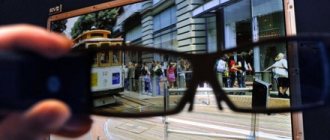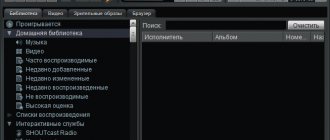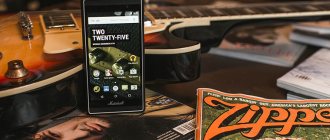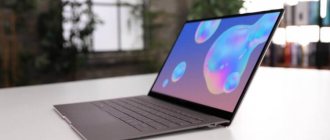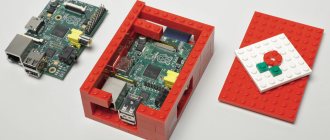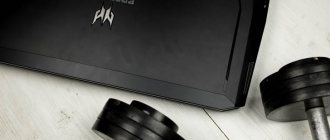Why do we love Cowon?
Perfect sound in steel.
What could be better? Before the review, it’s worth reminding newfags about Cowon’s most important achievements. When the trees were big and music was stored on CDs at best, the Koreans released Jet-Audio - perhaps the first multimedia library.
In addition to actually organizing and playing almost all formats, the software had an integrated complex for improving sound from several components:
- 20 band equalizer,
- BBE technology to restore sound clarity,
- BBE ViVA technology for stereo panorama correction,
- X-Bass technology to enhance low frequencies.
All this with minimal resource consumption, correct work with Hi-res in any form and internal 32-bit audio processing. In 1997, all this was like a bolt from the blue.
Cowon Plenue D2: amazing baby
A little later, the company's engineers released the brilliant multimedia Cowon A2 with a built-in HDD. Doesn't remind you of anything?
Cowon was also responsible for the first players with a slot for SD cards, which, together with a touchscreen, was a very rare occurrence. The dream of any audiophile, the D2 is still actively used by many owners today.
Brushed aluminum is the best decoration
Not surprising, because it was during the work on the D2 firmware that the legendary Rockbox appeared, which created the modern sound of portable equipment.
The improved version of D2+ was replaced by the Plenue series of several very successful models of multimedia players with playback of the most “heavy” formats and incredible battery life.
Ultra-compact with color screen
The original power button is a legacy
Now I have in my hands the new Plenue D2 , which combines all the best Cowon developments in a compact case: a color screen with a capacitive touchscreen, a grippy metal body and original hardware.
But more about her a little later. For now, let's focus on ergonomics, perhaps the most important parameter of modern players.
Once you take Plenue D2 in your palm, all other audiophile gadgets will seem like natural “bricks”. It's the size of a matchbox! But stylish and strict, it does not feel like a “toy”.
It fits perfectly in the palm: everything is at hand and you can hardly feel it
The body is assembled on an all-metal frame without a single sharp corner - they are all chamfered. The back panel is made of blued steel. The front is decorated with a 2.8-inch touchscreen display with a resolution of 240×320.
On the right panel there are 2 swings - volume and rewind, as well as “Start / Pause”. The power button is on top and is very similar to the cartridge primer when viewed from above.
The buttons are recessed from accidental pressing, but click easily
Alas, mechanical wheels can only be a dream. But for such compact dimensions this is an unprecedented luxury.
In general, the player is very similar to the ancestor of Cowon Plenue D , primarily differing from it in the firmware and the number of audio outputs. And, of course, the filling.
Plenue of sound: Cowon Plenue D
Many years ago, perhaps ten years ago, my harsh school and work days were brightened up by a tiny pocket box that produced amazing sound at that time for very reasonable money. On the back cover there was a Cowon logo, the model index was D2. And when Cowon Plenue D suddenly appeared on my desk in the office, I couldn’t deny myself the pleasure of trying it out.
for many, it remains a very interesting proposal: with the sound quality that even top-end pocket computers and smartphones produced by the end of the 2000s, a separate player was not a whim, but a necessity for almost any self-respecting music lover. And due to the firmware that existed then (and still exists today), Rockbox could provide the user with truly limitless possibilities at that time.
However, the native firmware contained a number of interesting aspects, including support for Flash games. Now this format has almost completely died out as a class, and it has been replaced by various crafts on Unity, but connect the PDA to a smartphone, download a toy onto a memory card, insert it into the player and play a little while listening to your favorite music... It seems great, but that’s the same thing “ but” was also present in this situation. Controlling a rather peculiar stylus, a not very fast processor - all this was a little disappointing.
But the price at that time was very interesting - about 8 thousand rubles per device. Various iPods and Archos at that time cost at least twice as much, were more thoughtful due to the use of HDD, and did not support memory cards. And here you have expandability and a sea of functions... It’s a sin!
Three years passed, and D2+ was released under the Cowon brand. It was a development of the first model, but, to be honest, I couldn’t notice any significant differences then and didn’t change my player. But for many who tracked updates in this market segment, the increased amount of memory for the same money has become almost a necessity.
Again three years, and again an update. Again, not so radical, but... The D20 again found its buyers in exactly the niche for which this device was aimed. Users went through life with Cowon, changing models not as often as other companies insisted on it, and received everything they needed from technical innovations at that time.
In fact, the Cowon company has a wide variety of players - a dime a dozen. There are the most basic solutions, the Plenue line, and a lot of solutions in between. The market is a complex thing, so if you have already attracted your audience to the budget segment, you need to transfer them to older models smoothly, without sudden changes. Nowadays, nothing has changed; there are about a dozen models that are suitable for certain tasks and user preferences.
So, Plenue D. Player? A true audiophile device! But at the same time he does not try to demonstrate this to others. The case contains glass and metal, but if you look, for example, at Astell&Kern Jr. or their AK320, then in Plenue D there are no edges, bends and other elements that should mark the status of the model. Yes, A&K is a completely different family of devices, but the adherence to the high-end style is pleasing to the eye, looks great and, as they say, does not cause any complaints. Plenue D has a mature, calm, but stylish design.
A small number of screws with a simple Phillips head were just asking: “Take me apart, please!” But I overcame myself and did not violate the integrity of the design of Plenue D - let it remain for a longer time what the engineers intended it to be, and not a pile of disparate boards. But very curious...
The Plenue D's screen is not exactly impressive. Diagonal - 2.8 inches, resolution - 240 by 320 pixels. That is, the icons will be small, and so will the playback controls. Fortunately, there are hardware keys for volume control, Play/Pause and rewind control.
With them, working with the player is much more comfortable. But sometimes you have to delve into more subtle settings, and then...
In general, see for yourself: an equalizer with a lot of presets (both custom and genre-specific or designed for certain types of headphones) is a useful thing, even if you are not a big fan of such sound customization. The player was used together with Audio-technica ATH-SR5 headphones, and in some cases the equalizer radically changed the sound of certain melodies, turning them into very pleasant and interesting tracks from rather flat and “typical” ones. The operating time of this device is stated to be quite impressive - 100 hours of “regular music” in MP3 format or 50 hours of “correct” FLAC. The general list of supported formats is as follows: FLAC, WAV, AIFF, ALAC, APE, MP3, WMA, OGG. Cowon notes that 50 hours of FLAC is the figure for playing 24-bit/96 kHz files. The player itself also supports 24 bit/192 kHz, but the load on the DAC will increase, which will lead to faster battery drain.
Well, before we talk specifically about the musical part, the sound output and impressions, let's talk a little more about the menu. It's worth it. Firstly, this is not some kind of modified Android (and if it is, then I, the editor-in-chief of AndroidInsider.ru, could not find a single sign). This is something original, and therefore not hung with a solid pack of crutches and bicycles. Which leads us to absolute intuitiveness of control and avoids confusion. If we want to set up the musical part, it’s easy. System menu - yes please!
If you have questions regarding the built-in memory, you can clearly check everything in the appropriate paragraph. 32 gigabytes of internal memory is quite a lot, but if you love FLAC and WAV, then a good-sized microSD is almost a must. There is never too much space.
Plenue D is a thing for adherents of good sound who don’t want to carry around another large gadget for listening to their favorite music in decent formats and with the right quality.
I tried to remember why Astell&Kern was so captivating to me and why Plenue D was worse in its reproduction - but I couldn’t. Well, I don’t have that audiophile streak that makes me buy three thousand dollar oxygen-free copper wires and hear the difference. Alas. But in everyday use, on walks, in the subway, and in general anywhere, Plenue D can easily brighten up the gray everyday life: throw this “baby” into the pocket of a jacket or trousers, stick something like the already mentioned ATH-SR5 or Westone (with which we sorted it out not long ago) - and don’t think about anything else.
The only negative that I noticed is that the player is somewhat averse to different types of drums, namely cymbals and hi-hats. But the equalizer mentioned above with 48 (sum in words: forty-eight!) presets did an excellent job with a number of Metallica tracks in which I noticed a similar flaw. Still, it’s not in vain that the company’s engineers eat bread and butter, oh, not in vain.
The music sorting is perfectly developed, and if you want to select a genre, year of release of an album, the album itself, artist - everything is available through a simple root menu. However, thanks to the touch display, a keyboard is available and a full search is possible, which also adds points to Plenue D.
As a result, there is nothing to add to the above text. That same D nameplate in the model name really allows us to recall miniature, but truly high-quality solutions for demanding listeners who were not ready to part with one and a half to two thousand dollars for a player, neither then nor now. But 20-25 thousand for such a device is already quite a pleasant offer, so it’s worth taking a closer look at Cowon Plenue D. There are not many companies that are able to maintain their brand for at least 10 years in a row.
Tabletop power and clear sound
Cowon's minimalism will appeal to many
Cowon divides its players into 3 categories: budget, middle and top. The former today use Wolfson codecs as the basis for audio decoupling, the latter have received separate DACs, and the third add to them a complex configuration of discrete amplifiers.
The company's main focus is not circuitry, but software based on its own operating system optimized for sound reproduction.
Decoding a digital stream up to 24 bit / 192 kHz from the Cowon Plenue D2 memory is handled by 2 separate digital-to-analog converters Cirrus Logic CS43131 , one per playback channel.
The screen is bright and clear, but fades a little in the sun
Next, the mix goes through 5 hardware filters (Fast/Low-latency, Fast/Phase-comp, Slow/Low-latency, Slow/Phase-comp, Non-oversampling), minimizing distortion and noise, which allowed us to achieve amazing results comparable to the best premium players.
The sound is incredibly clear: channel separation is 143 dB , signal-to-noise ratio is 130 dB and distortion is 0.0004% .
In addition, the developers did not forget to equip the new product with an additional 2.5 mm balanced output, which organically complements the base one.
Here we can already talk about the quality of the amplifier: although Cowon does not disclose the brand, it “swings” the unbalanced 3.5 mm output to a power of 2 V at a resistance of 1 Ohm , and the balanced output up to 4 V at 1.5 Ohm .
Fonts are readable even with its dimensions
Another feature of the Plenue D2 that makes it similar to older devices is the USB-DAC mode DSD decoding . Previously, only the company's flagship players were equipped with it.
And other brands do not often boast the ability to connect basic devices to computers as an external conversion device.
In general, the D2 path can be called a reference for the middle class. And the company’s software developments make it possible to equalize the player’s chances with more expensive devices.
Cowon C2 16Gb
Podbolotov Alexey, 06/05/2012
Advantages: 1. Sound. Yes, players of this brand have always differed from other remnants and stubs in sound quality. Still, the presence of a more or less acceptable built-in amplifier significantly improves the perception of music by the ears. And no matter what some say about the sound being inanimate, commercial, etc., despite all this, the sound is quite decent for its price segment. I think it’s not worth saying here that you need to select the appropriate headphones. 2. Omnivorous. You can listen to almost all more or less frequently used formats. And although the player is designed specifically for MP3 files, because for some other formats it refuses to accept tags or embedded covers, you can still listen to music in FLAC, OGG and others. 3. Ease of management. Yes, at first all this magic with a touch screen seems very unusual, but then, as it turned out, you very quickly get used to it and, on the contrary, even any other control method does not seem so convenient. 4. Ability to customize almost anything and everything. You can customize anything, from electronic sound enhancers (a la the jetAudio 2.0 system) to the appearance of the menu (you can find different themes online and install them) and interaction with the physical buttons that are there (you can configure them to different functionality, etc.). 5. Resistive touch screen. Just don’t say here that resistive technology is outdated and so on. For a miniature MP3 player, this is the best option, when in winter you can easily flip through the music with a gloved hand or, in fact, with absolutely any object. And despite the outdated technology, the screen is quite responsive. 6. Flash support. In your free time, you can entertain yourself with normal flash games. And although it’s not very convenient on such a small screen, you can still pass the time (well, if your eyesight is good :) 7. Support for MTP connection. Without delving into the weeds, this is necessary for those who want to scrape the music on Last. fm
Disadvantages: 1. See point No. 6 in the “Advantages” section. The screen is resistive, and for some reason this sometimes causes it to freeze, and this can only be cured by rebooting the player. This doesn’t happen very often, and even then only when you press it too often and too much. 2. The case is not of the best quality. The mirrored back cover is immediately covered with small scratches. You can buy a case, but then some of the functionality will be lost due to the fact that the physical buttons will no longer be convenient to press blindly. 3. The interface of the music player itself is certainly interesting (the album cover scrolls there, a la a record in a record player), but it cannot be changed, and for some reason the covers are not always displayed. This is uncritical of course, but unpleasant. 4. Judging by the reviews, this is a fairly common problem - the USB cable plug does not make perfect contact with the socket in the player, because of this the player sometimes suddenly disconnects from the computer. But over time, apparently, the nest moves, and now I have this problem less and less often. And the connector itself could have been made standard micro or mini-usb, otherwise such a cord would be hard to find. Yes, there is still no power supply for charging from a 220 network - that is, either only from a computer, or buy it yourself. 5. Still, at high volume levels, even it is not capable of producing crystal clear sound - noise, squeaking of high frequencies, and rattling of low frequencies are noticeable, but nothing can be done about it - this is quite natural for inexpensive players.
Comment: I am pleased with the player, of course, it is well worth the money, and if not for some minor misunderstandings, it would not have had a price at all. I have come to terms with the scratches on the body, and I don’t really notice them; this is still a purely utilitarian thing for listening to music, and not for admiring it (like, for example, Apple devices). Yes, by the way, if you are choosing between this player and some kind of iPod, and if sound is more important to you than appearance and gloss, then feel free to take this device. It costs an order of magnitude less than the iPod nano, which is similar in functionality, but is much less susceptible to music formats. And if you are choosing between it and some player from any third-party manufacturers (like teXet or explay), then in any case, don’t even hesitate and take this one. They have no fewer problems than this player, but the sound quality is twice as good.
Sound test. Maybe!
RHA T20: that feeling when the headphones are bigger than the player
Cowon's approach to creating and processing sound is quite original: a lot is entrusted to proprietary software technologies, which is not very familiar to the audiophile community.
To assess its capabilities as accurately as possible, I had to choose the best Scottish dynamic headphones RHA T20 with dual coil DualCoil , which increase the dynamic range and increase the driver's response speed (detail and accuracy).
RHA T20 have a monitor sound quality. In addition, the headphones independently cut off unwanted resonances of the camera and driver, so with them you can correctly evaluate the influence of the player.
Replaceable headphone filters allow you to further shift the emphasis of the sound, adjusting the balance of low and high frequencies for a more complete appreciation of the Cowon product.
Changing the accent does not affect the sound quality
Listening to a combination of Plenue D2 and T20 with low bitrate audio files does not make sense: even in a properly compressed mp3 ( lame 3.92 320 CBR ), compression artifacts, dips in the upper frequencies and the lack of “volume” created by the re-reflection of acoustic waves are noticeable.
Enabling the full JettEffect changes the sound dramatically. The sound becomes more balanced and voluminous, defects in the extreme frequencies are smoothed out. In “blind” listening, it is almost impossible to distinguish such an mp3 from a flac: it only produces a compressed dynamic range, which is clearly distinguishable using the RHA T20.
A completely different picture is observed when playing “heavy” flac and high bitrate DSD recordings. The bundle plays high-quality audio smoothly and correctly. Just like a desktop system will do it.
All frequency ranges are distinguishable up to maximum volume , where the upper ones are partially lost, giving way to more audible midranges. The sound is spacious and clear, without sibilance in the “tops” and ragged thumping lower bass.
The lower and sub-bass sound as expected, pleasantly, without boominess. The mids make it possible to distinguish all the instruments even in complex scenes where everything is lumped together at one frequency.
The scope of delivery of the RHA T20 is amazing
Initially, surround sound seems to “add” a couple of channels after applying Cowon software chips. In this case, the T20 fits perfectly with the player, allowing you to build a three-dimensional sound picture even in games where this combination allows you to accurately determine the position of the enemy.
The player copes with any genre, although the emphasis on low frequencies can add up to bass-heavy headphones, adding excessive coloration to the low frequencies.
However, a successful combination of hardware and software turns the Plenue D2 into one of the best portable players for those who love pleasant music while chasing fidelity. The balance is excellent.
Player Cowon C2
update of the hit model Cowon D2 The Cowon company, as you know, is famous for its audio players for good sound quality. Even when releasing multifunctional models such as J3, S9, where entertainment functionality is no less important, developers also monitor sound. One of the company's hit players was and remains D2. Released several years ago, it is still often seen in the hands of passers-by. Many people simply don’t want to change it for anything else, since high-quality sound, a touch screen, small dimensions and other useful little things are rarely found in players together. Taking into account the interest of users in this model, a practically reissue of it was released under the name D2+, without any significant changes. But according to current, so to speak, guidelines, D2, and D2+ too, are heroes of the past: the screen is touch-sensitive, but the interface is not very well tailored for the finger, yet many icons are too small; the design is quite crude and brutal, while most modern player models are more elegant, with beveled smooth edges, and in general are more pleasing to the eye. The company realized this and tried to revive the D2 and D2+ in a modern way - they corrected the design, slightly the functionality, as well as the sound, which was already rated by music lovers as very good - and called the new model... Cowon C2.
| Parameter | Meaning |
| Manufacturer | Cowon |
| Name | C2 |
| Dimensions | 78.7×53×12.8 mm |
| Weight | 84 g |
| Memory | 4, 8 or 16 GB flash memory |
| Display | Color TFT 2.5″ 320×240 |
| Interface | USB 2.0 |
| Audio formats | MP3, WMA, OGG, FLAC, WAV, APE |
| Video formats | AVI, WMV |
| Graphic formats | JPEG, BMP |
| Text formats | TXT |
| FM radio | Yes, with recording option |
| Audio recording | Yes, from microphone and radio |
| Battery | Built-in Li-Pol, claimed 55 hours of music playback and 10 hours of video |
| Memory card slot | Yes, microSD |
| Speaker | Yes |
As it was found out empirically, the key place in the continuity of the names of Cowon player models is occupied not by a letter, but by a number. Judge for yourself. There was a J3 player. Touch, large, but without a universal OS. And then the company released D3, similar in size and appearance, but on Android. So it is here - there was a D2 player, then a D2+, and now a C2. That is, oddly enough, it is the last number in the name that speaks of continuity.
So let's take a look at the new player. In terms of dimensions, the most noticeable difference from the D2 is the thickness, which has decreased from 16.6 mm to 12.8 mm. The numbers don’t seem to differ dramatically, but the new product feels thinner. The edges of the body have become less angular and streamlined. The back wall is now metal, glossy. Almost like an iPod Touch, but darker. Of course, it gets scratched in the same way, and to preserve its original appearance you will have to use either a film or a cover. There is no word yet on the availability of covers.
All control buttons are located on the top edge of the player. Instead of the on/off/lock slider used in the D2, the C2 has a regular button. A long press on it turns on the player, a short press locks the touch screen, and another long press puts the player into sleep mode. Frankly, the slider seems a little more convenient - in D2 you just had to move it, and the player would turn on. Here you need to press and hold for a couple of seconds.
The remaining buttons are located without any gaps between each other, which makes it slightly more difficult to control the player blindly. These are the traditional buttons M (exit to the menu), “+” and “−” (to adjust the volume).
In the middle of the left side there is a headphone jack. If you want this hole to be on the right side, you can change the orientation of the screen by rotating the player 180 degrees.
The right end is occupied by a flap, under which there is a slot for microSD memory cards, as well as a slot for the cable with which the Cowon C2 is charged and connected to the computer. Both of these sockets are not the same as in D2. Firstly, SD cards have been replaced by the more popular (and somewhat less convenient) microSD cards in mobile technology. The second change is more critical - miniUSB was replaced with a proprietary cable standard, which is found only in some of the latest models of Cowon players.
On the back wall there is a speaker - another innovation in the C2 relative to the D2. It is, as is usually the case, simple - an ordinary beeper, thanks to which the player can be used as an alarm clock. It's a pity that there is no provision for automatically turning off music playback when the headphones are removed - in this case, this speaker is always activated, which is sometimes unpleasant.
Screen, interface
It's a pity that the changes barely affected the screen. It was touch-sensitive, resistive, with a resolution of 320×240 pixels, and remains so. Only the diagonal has changed a little - 2.6″ versus 2.5″ for the “old man” D2. As a touchscreen, capacitive technology would be much more interesting - it is more sensitive to finger touches, but, it is worth noting, it is difficult to use in winter conditions, when the device would be more convenient to use with gloves (they have to be removed to operate such screens).
It's worth mentioning here the changes to the interface. If previously only the main menu, which was represented by traditional square icons, was “tailored” to the finger, now it is a multi-window menu, scrollable with a finger. In one window - music, video, radio, pictures and text viewer, in another - a file browser, flash player, voice recorder, calling up settings, in the third - various bonus functions presented in this model by a stopwatch, calculator, notebooks - one handwritten , the other with a virtual QWERTY keyboard. And on the last, fourth screen, you can quickly change the display orientation, brightness (from 1 to 10), design theme (there are only two), and send the player to sleep mode (this can also be done with a mechanical button). In addition to the main screen, all other functions of the player have become oriented towards finger control.
The player's interface is consistent with the latest models, such as J3, D3, that is, some continuity is preserved, which is certainly good for fans of the brand. All kinds of settings and control logic in general are also identical.
Lists are now scrolled not by clicking on icons, but by sliding a finger - as in all modern touch devices. But the implementation of scrolling is not ideal: the striped background stays in place, only the list moves, which is sometimes confusing. The screen sensitivity and list sliding algorithm are also not good enough. Scrolling through long lists is not very convenient, since only 4 lines with song names fit into the screen.
Music
So let's talk about how the music player is implemented. There are no fundamental differences from D2 here; they consist only in changing the interface and the way of opening settings, music libraries, etc. Of course, the same set of formats is supported as in almost all Cowon players: MP3, WMA, OGG , FLAC, APE, WAV.
The music library, traditionally for Cowon players, is represented by both a file browser and sorting of music by artists, albums, genres, years, and time of adding music to memory. In other words, you can choose any convenient way to access music. By the way, not only files from the built-in memory are added to the tag library, but also from a microSD card, which is very convenient. When navigating through folders, of course, you can open either the memory card or the built-in memory.
The playback screen is an animation with a spinning disc, the cover of which is the cover of the track you are listening to. If it is not available, a standard spinning picture is displayed. This animation, unfortunately, cannot be disabled. On top of this, information about the track is displayed in white - the name of the author and the title of the track. At the top there is a standard set of icons informing about volume, battery charge, and current time.
Clicking on the screen brings up a panel with buttons, as well as a progress bar: by clicking anywhere on it, you can immediately find yourself in the corresponding place in the track. The buttons are: Play/Pause, for switching tracks forward/backward, as well as a button for opening music. And this is where the fun begins. By clicking first on the screen, then on this pop-up open music button, you are taken to the list of songs you last opened. But to move up the file hierarchy, you need to click on the small icon in the upper right corner with the image of a dialog bubble (which is already quite strange). Then the “Up” button will appear at the bottom, only by clicking which you can open the rest of the music library. In other words, you need to press 3 times in different places on the display, which is not logical. In this case, the upper left corner during playback is occupied by an icon of a music browser, based on the display of album covers.
Considering that very rarely all albums are provided with covers, this function is rather decorative. Just there you could put a button for quick access to a normal music library.
The “next” button on the playback screen brings up a window with various settings related to the music player. This includes looping a section of a track, adding a track to the favorites list, creating a bookmark, selecting an equalizer mode, and also setting the playback mode. The following modes are available to you: repeat all/one song; in order/random playback; play one song, all songs or only the current folder; playback speed adjustment. In general, all these same features were available in D2.
The equalizer is traditionally presented with both the ability to choose from a huge number of presets and the ability to create 4 of your own presets. It is possible to adjust the frequency response within very wide limits - you can manually select the adjustable frequency and bandwidth (from the options “normal”, “wide”, “narrow”). On top of the usual settings, you can apply “enhancer” effects BBE+ and STE (Stereo Enhance).
When the display is locked, the mechanical buttons can be left unlocked (there is a corresponding setting). In this case, the M button will work as Play/Pause, and “+” and “−” will work for their intended purpose (volume adjustment). It’s a pity that the manufacturer didn’t improve the ergonomics of the previous model and didn’t add mechanical buttons for switching tracks, because every time you have to take the player out of your pocket to do this. But if this cannot be changed in any way, then the firmware developers promised to seriously improve the ergonomics of the interface.
The player's sound quality is traditionally high. In comparison with D2, it is slightly better, but this cannot be noticed with any headphones, and not every person can do it. In the high-impedance monitor Sennheiser HD-600, the difference between the two players is not noticeable - the distortion of both the first and the second with such a load is minimal. There is a difference with the reinforcement “droplets” of the Creative Aurvana In-Ear 2, the C2 sounds cleaner, there is less distortion, especially at high volumes.
As for the volume, in comparison with the D2 it is the same or even slightly lower. If no one will listen at high volume with earplugs and both players have enough volume to spare, then in on-ear high-impedance headphones (the same Sennheiser HD-600) the D2 is a little louder, but not critical. Neither the D2 nor the C2 have almost any volume headroom with such headphones.
The player's headphone amplifier needs to be tested at a low-impedance load, since only in this case a number of specific problems are revealed. We used a special RightVolume Two test device containing load resistances of 16, 32, 64, 300 Ohms. An E-MU 0202 USB sound card was used as the digitization interface. The most revealing tests are frequency response and harmonic distortion.
| Test | Cowon C2 16 Ohm | Cowon C2 32 Ohm | Cowon C2 64 Ohm | Cowon C2 300 Ohm |
| Frequency response unevenness (from 40 Hz to 15 kHz), dB | +0,10, −1,81 | +0,03, −0,59 | +0,02, −0,19 | +0,02, −0,12 |
| Harmonic distortion, % | 0,034 | 0,021 | 0,012 | 0,0056 |
Frequency response graph under load with various resistances:
Harmonic distortion graph under load of 16 and 300 Ohms:
Harmonic distortion graph under load of 32 and 64 Ohms:
In addition, we carried out measurements by connecting real headphones. The following models were used: Sennheiser HD600 (300 Ohm), Philips SHE-9850 armature (12 Ohm), Creative Aurvana In-Ear2 armature (42 Ohm).
| Test | Cowon C2 no load | Cowon C2 with Philips SHE-9850 headphones (12 Ohm) | Cowon C2 with Creative Aurvana In-Ear2 headphones (42 Ohm) | Cowon C2 with Sennheiser HD600 headphones (300 Ohm) |
| Frequency response unevenness (from 40 Hz to 15 kHz), dB | +0,03, −0,12 | +0,36, −2,51 | +0,21, −0,94 | +0,11, −0,18 |
| Harmonic distortion, % | 0,0055 | 0,086 | 0,028 | 0,0044 |
Summary graph of frequency response. It also includes the frequency response obtained when measuring without load:
Harmonic distortion graph when connected without load and under load with Sennheiser HD600 headphones (300 Ohm):
Harmonic distortion graph under load with Philips SHE 9850 (12 Ohm) and Creative Aurvana In-Ear2 (42 Ohm) headphones:
For audiobook lovers
Traditionally, we include in a special mini-chapter information that is critical for audiobook lovers. As already noted, the player allows you to manually bookmark audio files. In addition, it automatically remembers the place in the track where it was turned off. And thirdly, the player itself moves to the next folder when the current one ends. We draw attention to this, since many players do not know how to do this and stop playback after the last file from the current directory.
Watch video
Of course, the screen diagonal is too small for comfortable viewing of video, but when there is nothing else, many people use this bonus feature. The JetAudio program, which is traditionally supplied on disk, has a video encoder with specially selected settings for the C2. But the player can play AVI, WMV, ASF formats, codecs - DivX 3/4/5, Xvid SP/ASP, WMV 7/8/9. In other words, it is able to play a standard DVD rip in AVI format without the need to convert it.
Despite the small screen and the secondary function of watching videos, it has a lot of settings. The aspect ratio of the video being played can be changed. You can select the playback mode - repeat all, play only one folder or all files from memory, loop a file. It’s difficult to say why there are so many different modes, but they exist, and maybe they will be useful to someone. The playback speed is adjustable - you can watch another series faster. You can bookmark a video, loop a section, and even apply equalizer effects to the audio track. Subtitles are also supported - SMI, SRT formats. For them, you can adjust the font size, position on the screen, color.
Dictaphone
The recorder is very good, sensitive, there are settings for bitrate (up to 256 Kbps) and volume. The recording format is WMA. As we have noted more than once, the voice recorder function of Cowon is implemented in the best way among other players (in terms of recording quality).
Text viewer
Only one format is supported - TXT; Russian text is normally displayed in ANSI and Unicode encodings. Among the settings and features, there is changing the font size, auto-scrolling text, choosing a design theme from the preset ones - font color + background color. Moreover, there is both a “day” mode - black text on a white background, and a “night” mode - gray text on a black background. You can bookmark it. It's a pity, but the text does not expand to full screen - all sorts of service information is displayed at the top. You can scroll either by sliding your finger or screen by screen by pressing the top or bottom of the screen. The words at the end of the line are not torn, but are transferred to the next one entirely. In general, of course, the functionality is worse than that of reader programs on smartphones, but in extreme cases you can read from the player.
View pictures
Only JPEG format is supported. Pictures can be rotated and enlarged when viewing. There is a slide show mode.
Radio
The radio is also functional. Of course, there is both a manual search for stations with storing them in memory, and an automatic one, when the entire FM range is scanned. Stereo can be turned off in poor reception conditions. The region also changes - in Japanese, as you know, the range starts at 76 MHz. It’s convenient that the radio sound can be muted if necessary using the touch button on the display - in many players, this requires a long time to turn the volume to minimum. The reception quality is good. Unfortunately, the player will not receive stations without headphones - they act as an antenna. There is a radio recording function - it is also recorded in WMA format.
Other functions
The player has several "bonus" features. For example, a calculator is an ordinary one, not an engineering one.
Handwritten notes function:
Stopwatch:
Function of notes typed on an English QWERTY keyboard:
Battery
The official website claims 55 hours of audio playback and 10 hours of video playback. Playing a varied set of music with the screen off - from MP3 with a bitrate of 256 Kbps to FLAC and WAVE, at medium volume, with Creative Aurvana In-Ear2 headphones (42 Ohm), lasted about 33 hours. So, if the stated figures are correct, then for more gentle conditions - low-quality music, headphones with lower resistance.
Computer connection
The player is detected by the system as a regular removable disk, the memory card is defined as a separate device. The speed of copying files to memory is about 4-4.5 MB/s; when copying to a microSD card, it reaches 6 MB/s.
Prices
Below you can see the average retail prices for different versions of Cowon C2 that were current at the time you read this article.
| Cowon C2 4 GB | Cowon C2 8GB | Cowon C2 16 GB |
| N/A(0) | N/A(0) | N/A(0) |
Conclusion
The next re-release of the player was more significant for him than the previous one, when D2 was transformed into D2+. Compared to the previous model, the new C2 has a new, more modern design, a slightly larger screen, slightly better sound and speaker. But this player remained at the same level both functionally and in terms of ergonomics. Still, it would be worth installing a capacitive screen and thinking through the control logic more thoroughly. The developers promise to work hard on the latter. In general, the player was not damaged, except that the cable for connecting to the computer was made non-standard and the SD cards were replaced with microSD.
Well, let’s briefly describe the pros and cons of this model in general, without regard to the previous model D2 and D2+.
pros
- small size;
- support for multiple audio formats;
- support for memory cards (microSD);
- video playback without conversion;
- good sound.
Minuses
- small screen (in terms of watching videos);
- non-standard cable;
- control logic is not always successful;
- resistive screen.
Is it worth buying a player?
Players are still more reliable. And they sound better
Evaluating portable audio players today is an extremely thankless task. First of all, the question arises: “Why buy a separate device for listening to music if my smartphone does a good job?”
Fortunately, Cowon Plenue D2 has a number of important advantages that allow you to delimit zones of influence. Among his camp comrades, he is distinguished by his convenience, compactness and autonomy.
Well, smartphones... Do you want good sound and long battery life? The player will be the only option.
A suitable audio interface simply won’t fit into any smartphone, and finding a suitable model is becoming increasingly difficult - only Meizu and LG are left. Here you will think 100 times whether it is worth merging.
Not only a cool player, but also a stylish accessory
After all, the Cowon Plenue D2 sounds at its entire cost of 29,990 rubles, no worse than similar Fiios, and a powerful sound tuning system allows you to catch up with the sound of top audiophile devices.
Real lovers of good sound should take a closer look. The legend returns with renewed vigor.
Main advantages
Plenue D2 did a great job in T20
JettEffect software settings allows you to adjust the sound of any headphones to any listener without any restrictions.
2. High power and the presence of a balanced output are useful for “tight” audiophile monitor headphones, which the Plenue D2 rocks in no time.
3. High-quality DACs process sound accurately and correctly, which is also useful for subsequent equalizing.
4. Low power consumption of the player allows D2 to work for 45 hours when playing lossy files, and at least 30 hours with losseless. Smartphones can't handle that much.
5. Compact dimensions and a convenient firmware menu turn the new Cowon into a really convenient accessory that you want to carry with you.
Inside the black box
The player is packaged in a strict black box made of thick cardboard with an embossed inscription Plenue. Lifting the lid, we find the player inside. And it's all? No, after a moment of confusion it turns out that everything else is hidden in the depths of the “two-story” box. By the way, trimmed with velvet! After removing the player and lifting the lid, we find a leather case, cable and instructions in the “underground”.
Full set
Box, player, case, cable, case packaging, cable packaging, instructions and other pieces of paper. And nothing more is needed.
Box
Made of thick black cardboard, pleasant to the touch
"Top tier" of the box
Here in a cozy box there is a player
"Bottom tier" of the box
And here is the case, cable and papers, packed in their own boxes
The Plenue S body is made from a single piece of anodized aluminum, and the front part is occupied by a 3.7-inch diagonal touch screen. The back of the case is ribbed, like a radiator. This was probably intended, because the player gets noticeably hot during operation. This does not cause any inconvenience - holding the gadget in your hand is quite comfortable, and it looks original. There is no oleophobic coating on the screen and fingerprints are treacherously visible on the glossy surface. Those who are offended by this will have to carry a cloth with them or use the control buttons on the side faces. By the way, I will like this option much more - the buttons are very pleasant to the touch, have a short stroke without the slightest play, and when pressed they make a thoroughbred metallic click.
Front side
Everything here is strict and concise - only a touch button
Backside
Looks like a radiator, and for good reason
Right side
Here are the volume control and playback control buttons
Top end
Headphone jacks and power button
Bottom end
Here is the Micro USB connector and the linear balanced output contacts
Left side
There is only a microSD slot here
At the top there is a large power button for the player with a three-color LED status indicator. Below you can find a pair of triple contacts, which are audio outputs for connecting accessories such as various docking stations or speaker systems. At the bottom of the screen there is a small touch “Multi-button”, as Cowon called it. Possible actions when pressing this universal button are selected by the user in the settings menu.
Gadgets
Two phablets, two tablets, a clamshell and accessories: Galaxy Unpacked
Summarizing my first impressions, I can say that the player looks and feels quite solid. Of course, the gadget turned out to be quite weighty - 204 grams. But, believe me, any iPod next to it will seem like a plastic rattle! The player is more like Vertu phones - old-school large, thick and heavy.
The icing on the cake is the branded case that comes with the player. It is made of excellent quality genuine leather and, apparently, hand-sewn, because the seams are slightly uneven. I consider this more of a plus than a minus, because it immediately gives the thing a certain charm. After all, no one is complaining about the stitching in Bentley interiors being out of line.
Player in a case
Fits tightly and looks expensive
Reverse side of the case
Contrast stitching and embossing
Right side of the case
With cutout for function buttons
The case fits tightly, looks nice, and all buttons and player controls remain accessible. True, in the case Plenue S does not look and feel so brutal and does not feel cold on the hand with metal. But this is a matter of taste.


